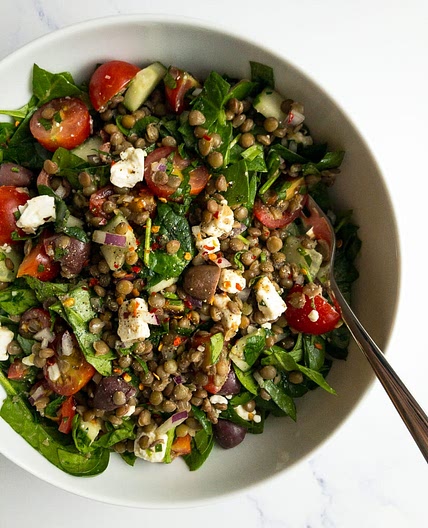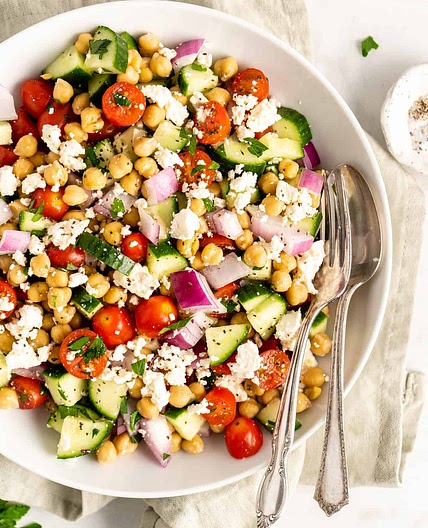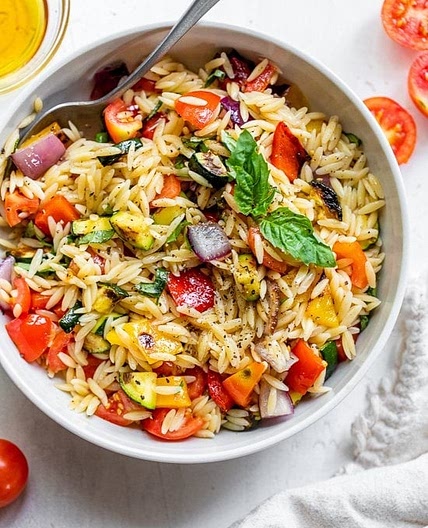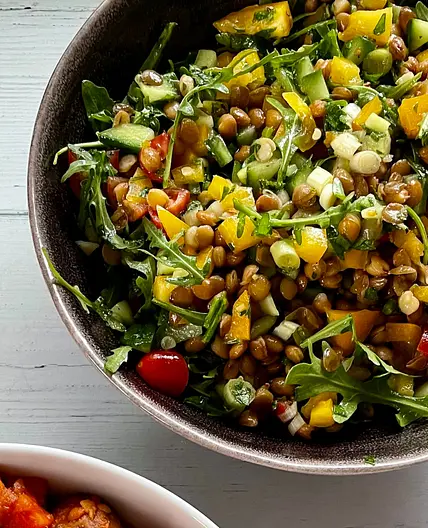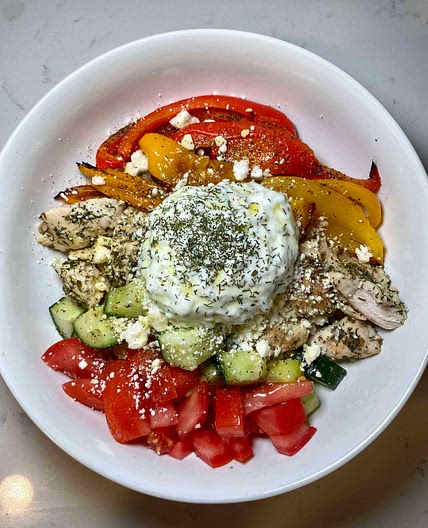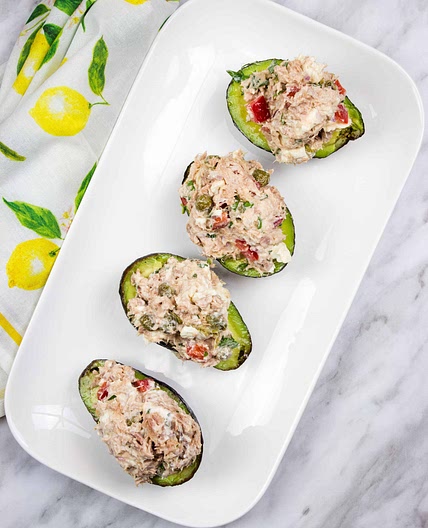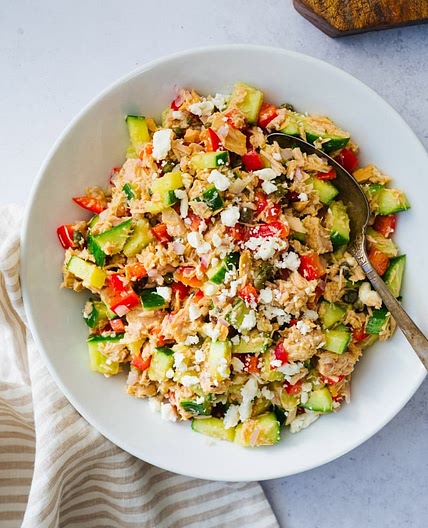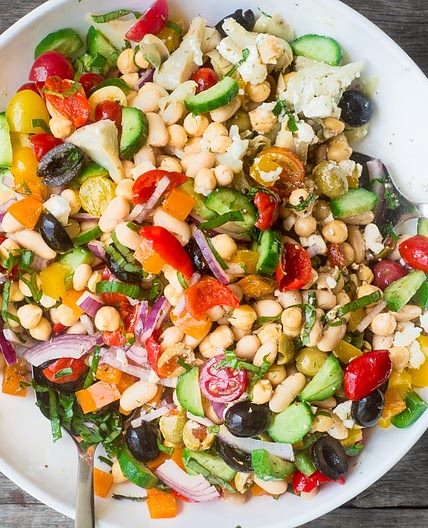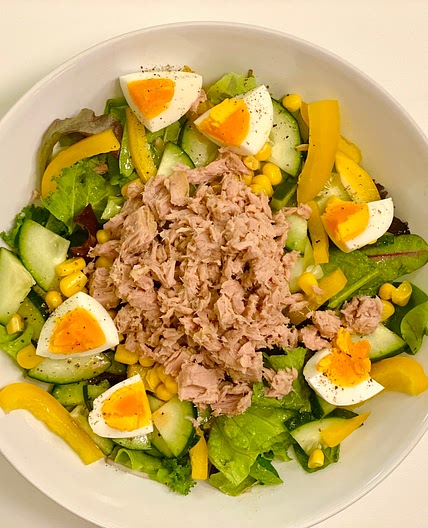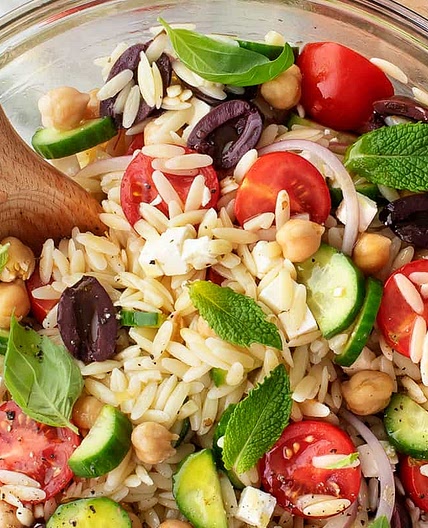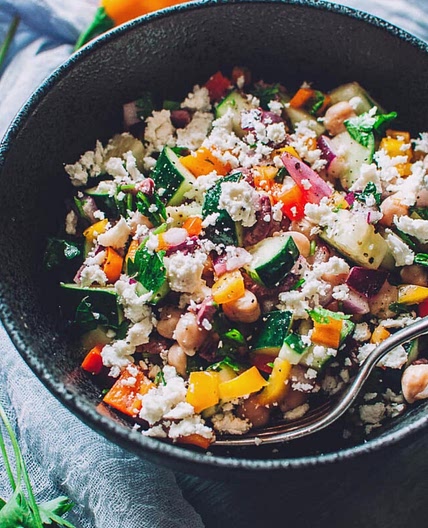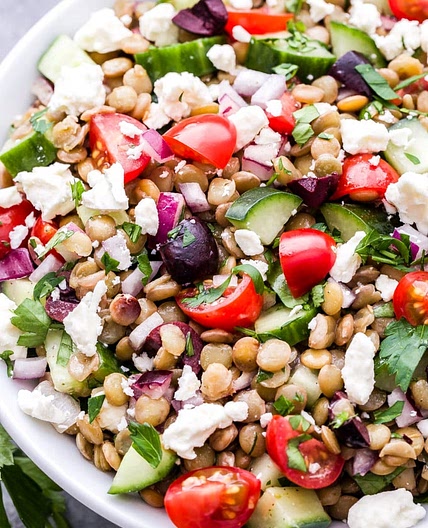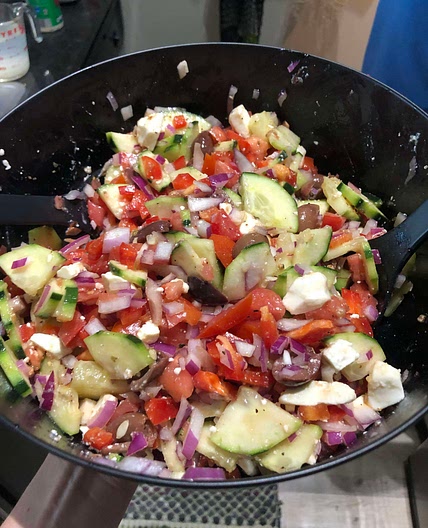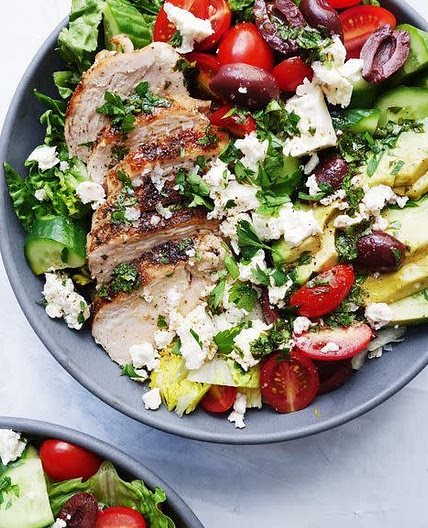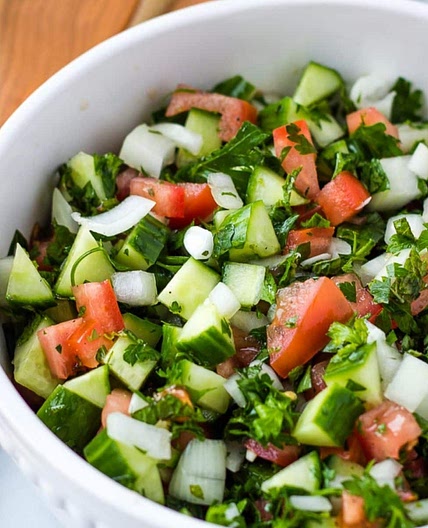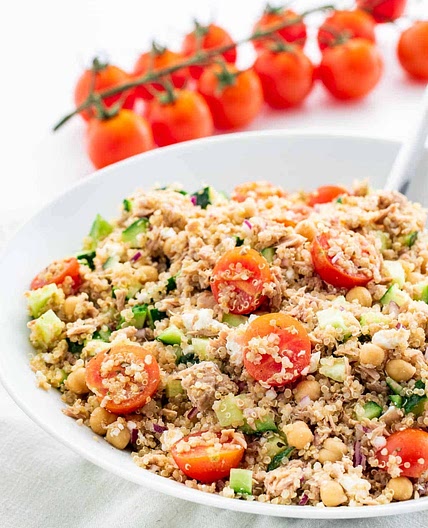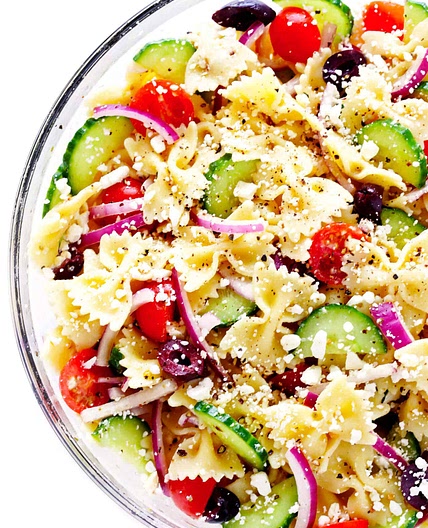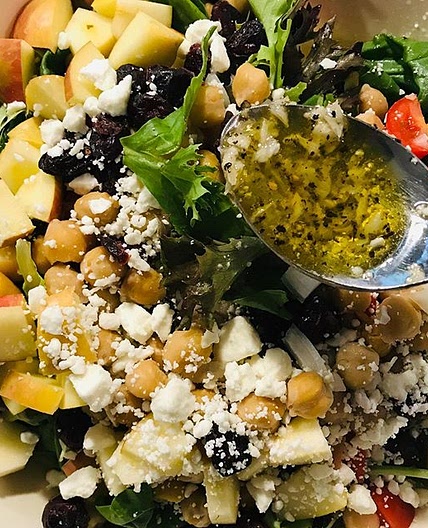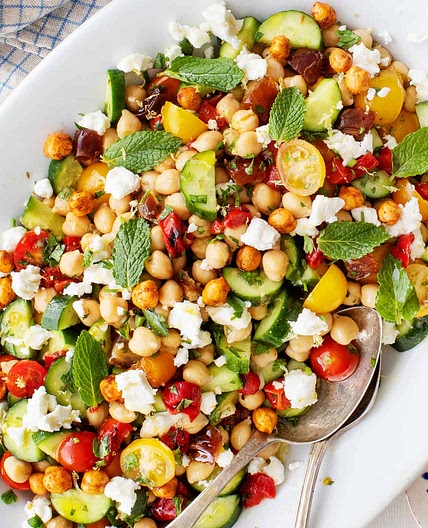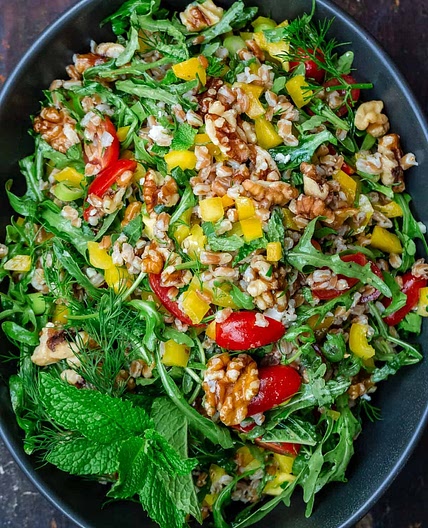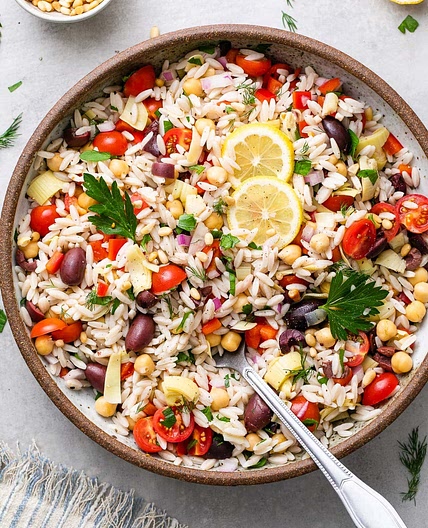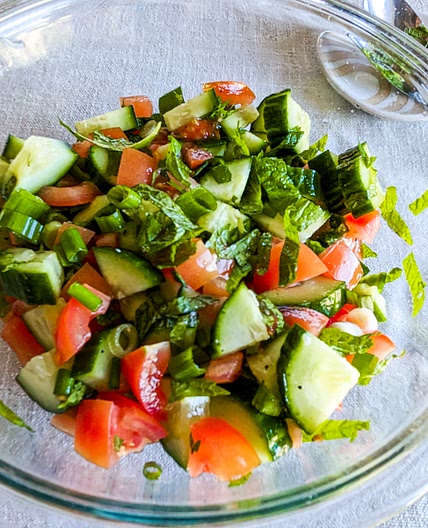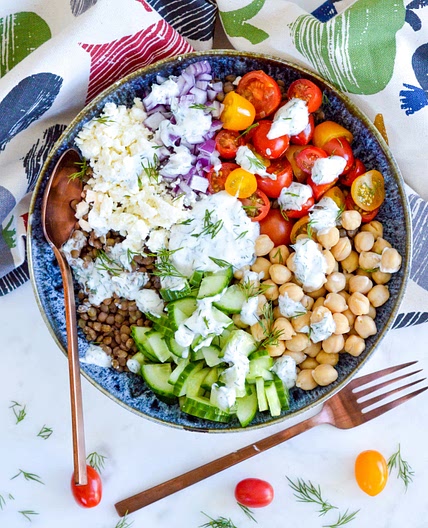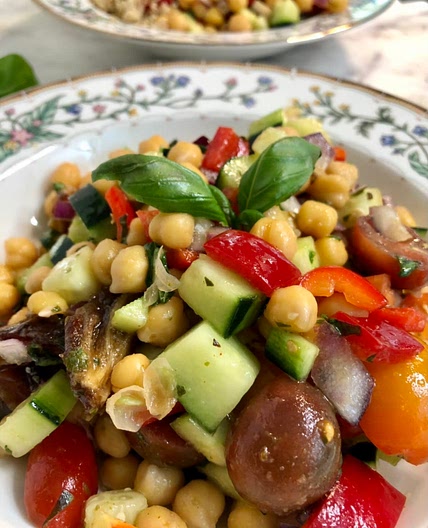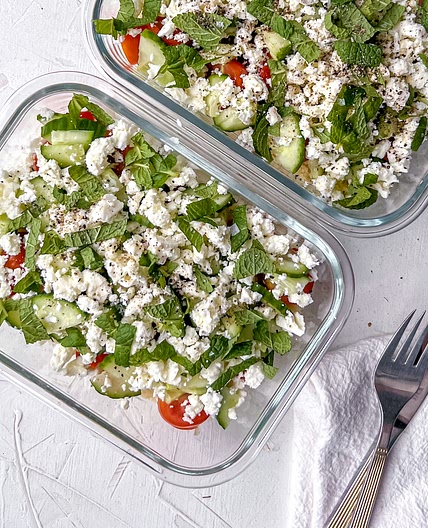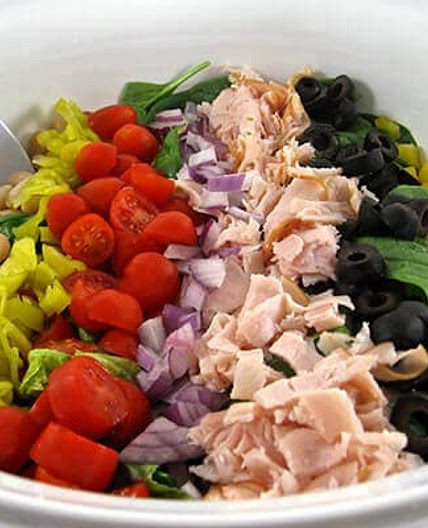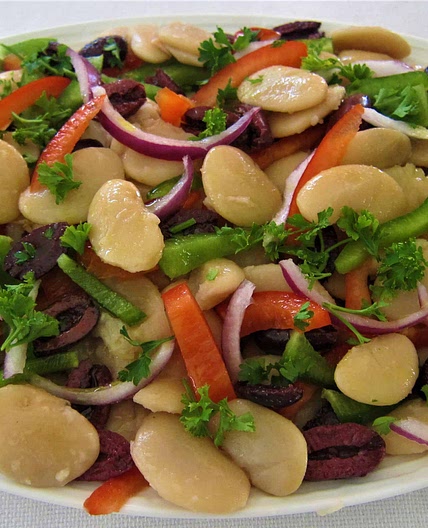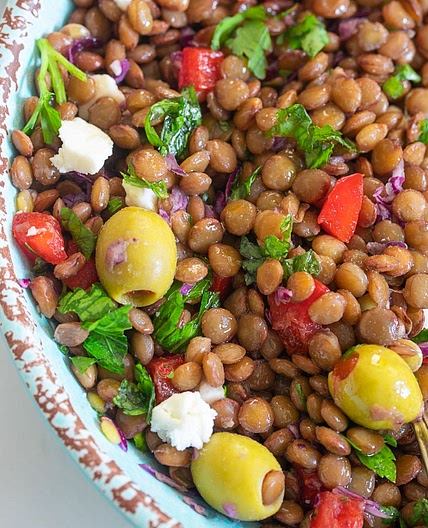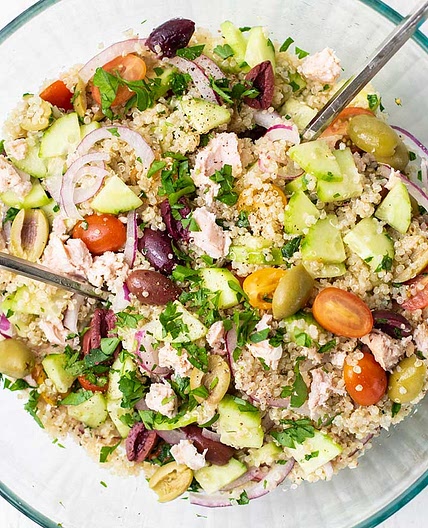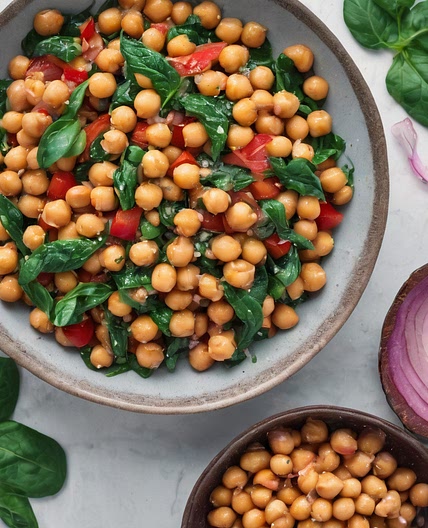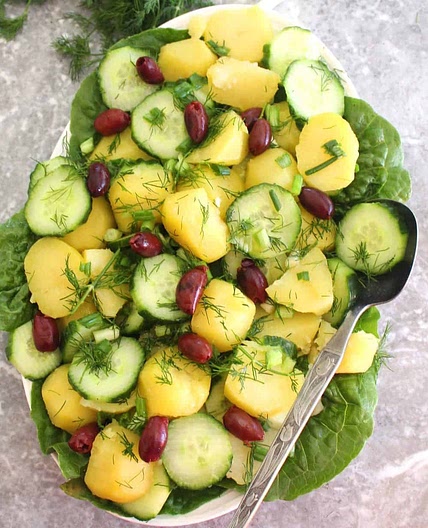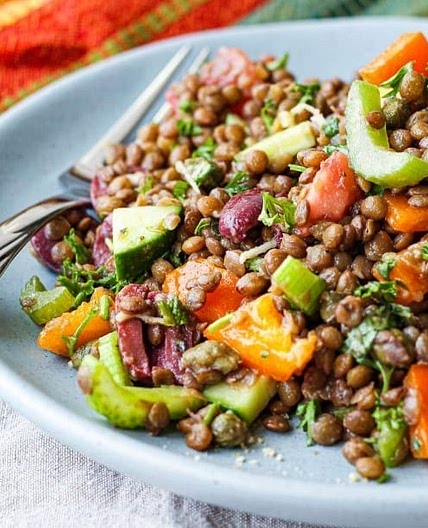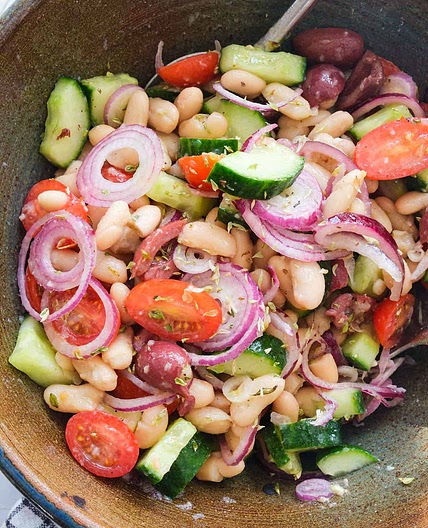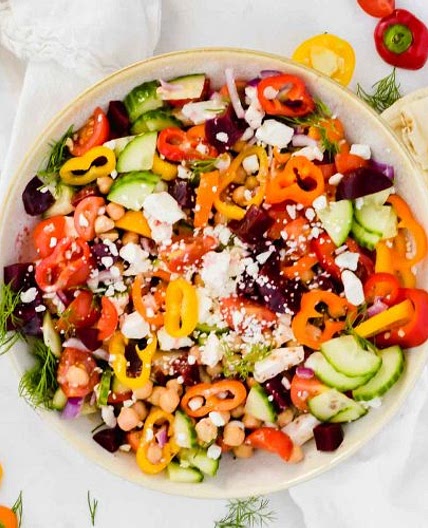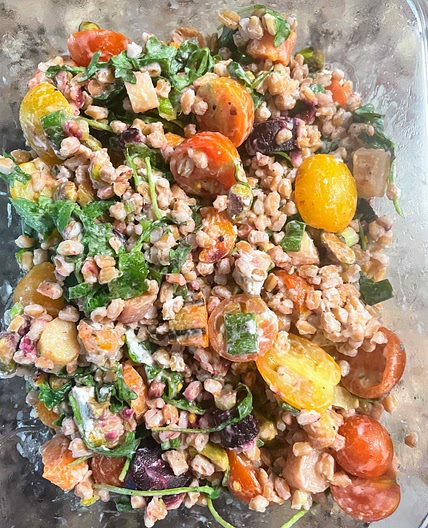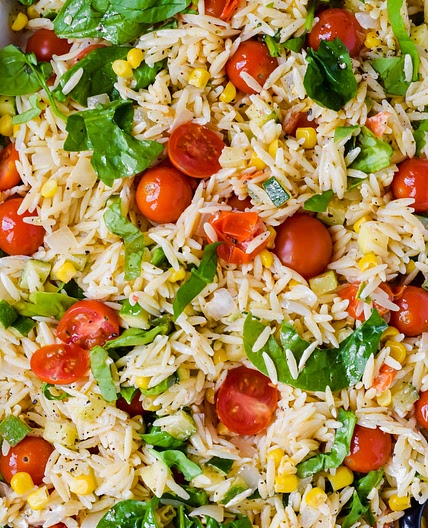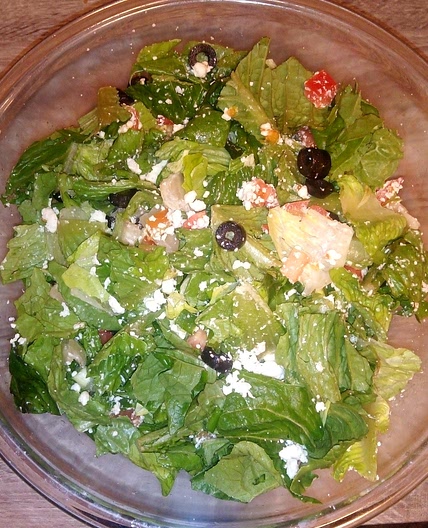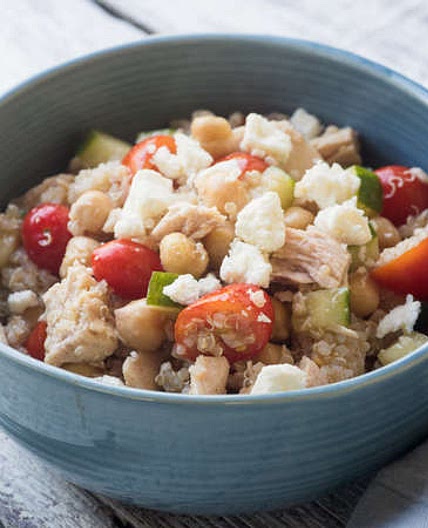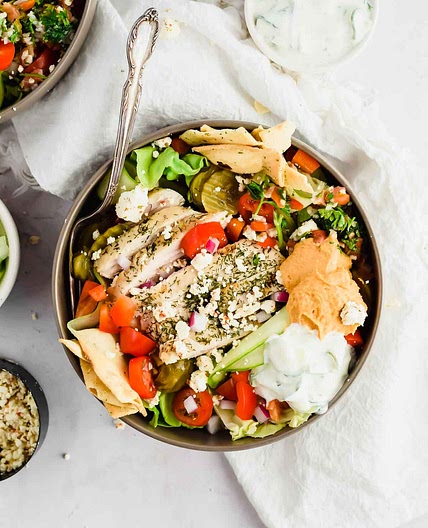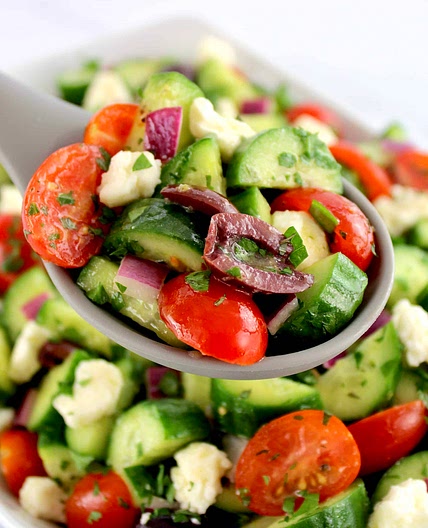Mediterranean Salad: All You Need to Know
They say, “simple is better”, and the Mediterranean salad proves this saying to be true. The Mediterranean salad is one of the easiest salads to prepare while remaining refreshing, vibrant, and nutrient-packed.
Nutrition per serving size(169g)
- Energy: 197.66
- Total Fat: 11.17
- Saturated Fat: 1.8
- Carbohydrate Total: 19.6
- Sugars: 2.06
- Protein: 4.63
- Sodium: 321.38
- Fiber: 2.9
- Trans Fat: 0
- Monounsaturated Fat: 6.68
- Polyunsaturated Fat: 1.73
- Cholesterol: 2.47
- Calcium: 42.37
- Magnesium: 45.69
- Potassium: 154.91
- Iron: 1.71
- Zinc: 0.82
- Phosphorus: 115.91
- Vitamin A: 333.78
- Vitamin C: 21.55
- Thiamin B1: 0.08
- Riboflavin B2: 0.09
- Niacin B3: 0.36
- Vitamin B6: 0.14
- Folic Acid B9: 49.73
- Vitamin B12: 0.05
- Vitamin D: 0.01
- Vitamin E: 1.76
- Vitamin K: 12.62
- Tryptophan: 37.57
- Alpha Carotene: 0.05
- Beta Carotene: 66.55
- Omega 3 DHA: 8.85
- Omega 3 EPA: 0
They say, “simple is better”, and the Mediterranean salad proves this saying to be true. This is one of the easiest types of salads to prepare. It packs a good taste punch, while remaining refreshing, vibrant, and nutrient-packed.
If you’re planning an al fresco lunch or want a light side dish for a dinner party, we’ve got everything you need: key ingredients, nutritional benefits, and Mediterranean salad recipes.

History of the Mediterranean Salad
What counts as a Mediterranean salad anyway? Truth be told, it’s quite a vague term. Basically though, it’s a fresh and vibrant dish that typically includes a variety of vegetables like tomatoes, cucumbers, bell peppers, onions, and olives, along with feta cheese and a tangy dressing made with olive oil, lemon juice, and herbs.
For it’s origin, we can’t exactly pinpoint one exact country that can take credit for this delicious salad. Which is probably why it isn’t called a French, Italian, or Spanish salad. Instead, the Mediterranean salad takes inspiration from the diverse cuisines of the Mediterranean region. At its core, it embodies the simplicity and authenticity of Mediterranean cuisine.
Mediterranean Salad vs. Greek Salad: Are they the same?
The short answer would be no, as a Mediterranean salad is not automatically a Greek salad. However, they do have plenty of similarities.
The Greek Salad is more specific with its ingredients. It Kalamata olives, and feta cheese. It also specifies that you add red wine vinegar to its salad dressing. On the other hand, the ingredients for a Mediterranean salad may vary from one region to another. There are also recipes that combine the elements of each salad together.
Making a Classic Mediterranean Salad at Home

The ingredients may vary from one region to another, and may sometimes be found similar to the Greek Salad and a Persian salad called Shirazi salad. But mostly its flavor, texture and aroma are commonly composed of the ingredients below:
Salad
- Crispy cucumbers
- Tomatoes
- Onions
- Optional: Bell peppers, Olives
Dressing
- Fresh Lemon Juice
- Olive Oil
- Herbs: Freshly chopped or dried mint, or Oregano
- Optional: Parsley, Basil
- Salt, and pepper to taste
Mixing up your Mediterranean recipes
There are several variations you can explore. While this dish is mostly enjoyed as a salad, appetizer or snack, some people tweak this and make it into a meal by adding different ingredients, or including it in their meal prepping schedules.
Below are some ingredients that can add flavor, texture and nutritional value to a Mediterranean salad recipe:
| Adding Carbohydrates | Adding Protein | Adding Fat |
| Enjoy it in a pita wrap | Grilled/Boiled Chicken fillet pieces | Tree nuts: walnuts, almonds |
| Use the salad as an addition to a rice bowl | Pan-fried/stir-fried shrimp | Seeds: sunflower, pumpkin, hemp |
| Adding roasted sweet potato or pumpkin | Chickpeas, Tofu, Cheese (parmesan, feta cheese) | Avocado |
Adding different sources of carbohydrates, protein and fat to this salad can help improve its flavor, texture, appearance and nutritional value. It can also take the recipe from a side to a main course or help you meet your health goals more easily.
Health Benefits of Mediterranean Salad
If there’s one thing we’re always told about salads, it’s that they’re healthy. But what exactly does that mean? How do they help keep you feeling in tip top shape?

Improved Heart Health
The ingredients of Mediterranean Salad are rich in vitamins and minerals, antioxidants, and healthy fats that can help reduce the risk of heart disease. The main ingredients of the salad – tomatoes, cucumber, and olive oil – are known to lower cholesterol levels and improve vascular function. So more salad = a longer lasting heart! (Hopefully).
Weight Management
Like many salads, this dish is low-calorie, high volume, and nutrient-dense dish that can help with weight management. Because you can eat a lot of it without taking in too many calories, it’s a great dish to add bulk to your meals to help you feel full.
On top of that, Mediterranean salad is an excellent source of fiber and protein (especially if you add chicken, eggs, fish, or tofu), which can help you feel full and satisfied for longer periods. This reduces the chances of overeating.
Tips for Preparing a Mediterranean Salad

1. Always choose fresh and seasonal produce
To make sure the salad is as good as it could be, you want the best produce. Choose the ripest tomatoes, crisp cucumber, lettuce (optional), and fresh herbs – it’ll look and taste better!
2. Balance the flavors
Aim for a well-balanced combination of savory, acidic, salty, and sweet flavors. Play around with the ingredient amounts to get the flavor character you like.
3. Be bold and try different ingredients
If you’re not that strict with when following Mediterranean salad recipes, don’t be afraid to introduce yourself to other ingredients like Artichoke hearts, roasted red peppers, sun-dried tomatoes, or capers. These can all add an extra layer of flavor, texture, and visual appeal – after all, you eat with your eyes first!
Frequently Asked Questions About Mediterranean Salad
Making this is quick and easy! It usually takes around 15-20 minutes to prepare, depending on how fast you chop the veggies and assemble the ingredients.
You can make a Greek Salad, Tabouli or Tabbouleh, Cucumber and Tomato Salad with Dill or go for an Israeli Salad with the classic Lemon & Olive Oil dressing.
Yes, it can be a perfect dish for vegetarians. You can use plant-based cheese alternatives such as vegan feta or tofu. You can also add roasted vegetables or grains to make the salad more filling.
Absolutely! Tomatoes and cucumbers are the foundation of a simple Mediterranean salad. Add a drizzle of olive oil, a squeeze of lemon juice, and a sprinkle of salt and pepper for a refreshing and classic combination.
Yes, you can substitute lemon juice with vinegar in the dressing. Balsamic vinegar or red wine vinegar can add a tangy twist. Just adjust the amount to taste and enjoy the new flavor profile.
Conclusion
If you’re looking for a refreshing and nutritious dish, Mediterranean salad is the perfect option. This salad is versatile and can be customized with your favorite ingredients. It also provides many health benefits and is easy to prepare. Try it today and experience the Mediterranean flavors that everyone loves.


